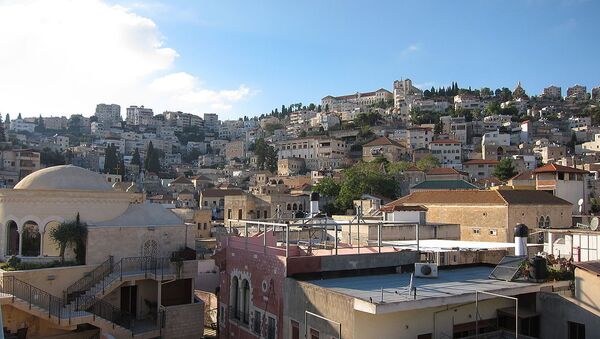New research into the history of the ancient city of Nazareth, which is named as the childhood home of Jesus Christ in the New Testament, has unearthed new details about the city's past, some of which may even explain certain details present in the biblical narrative, Live Science reports.
The study, authored by Ken Dark, director of the Nazareth Archaeological Project, postulates that Nazareth actually opposed Roman cultural practices, even as the neighboring city of Sepphoris embraced them.
"Cultural separation may have created what was, in effect, an invisible barrier between Nazareth and Sepphoris," Dark wrote in his new book called "Roman-Period and Byzantine Nazareth and Its Hinterland".
He also notes that Nazareth's resistance to Roman rule possibly led to a revolt around 70 AD, digging “refuge caves to protect themselves from Roman soldiers”; the residents of Nazareth also apparently adhered to the customs dictated by ancient Jewish religious laws, such as refusing to use human waste as manure, unlike their neighbors from Sepphoris.
"The all-encompassing message of salvation being presented by Jesus might also have been controversial to local people who may have sought to create a cultural barrier between themselves and the Romans", he told the media outlet.
Dark's treatise also suggests that Nazareth may have been bigger than originally believed, as in the past, some scholars apparently believed that the settlement was "very small" in Jesus' time.
"Excavated evidence from work by numerous archaeologists over more than a century demonstrates the existence of domestic structures, storage facilities and hiding places in central Nazareth dating from the Roman period," Dark wrote. "There is evidence of agriculture, quarrying and rock-cut tombs".
According to the media outlet, Dark's research in Nazareth is "ongoing" and "a book set to be published later this year will present detailed results from a specific site in Nazareth known as the 'Sisters of Nazareth' convent".



